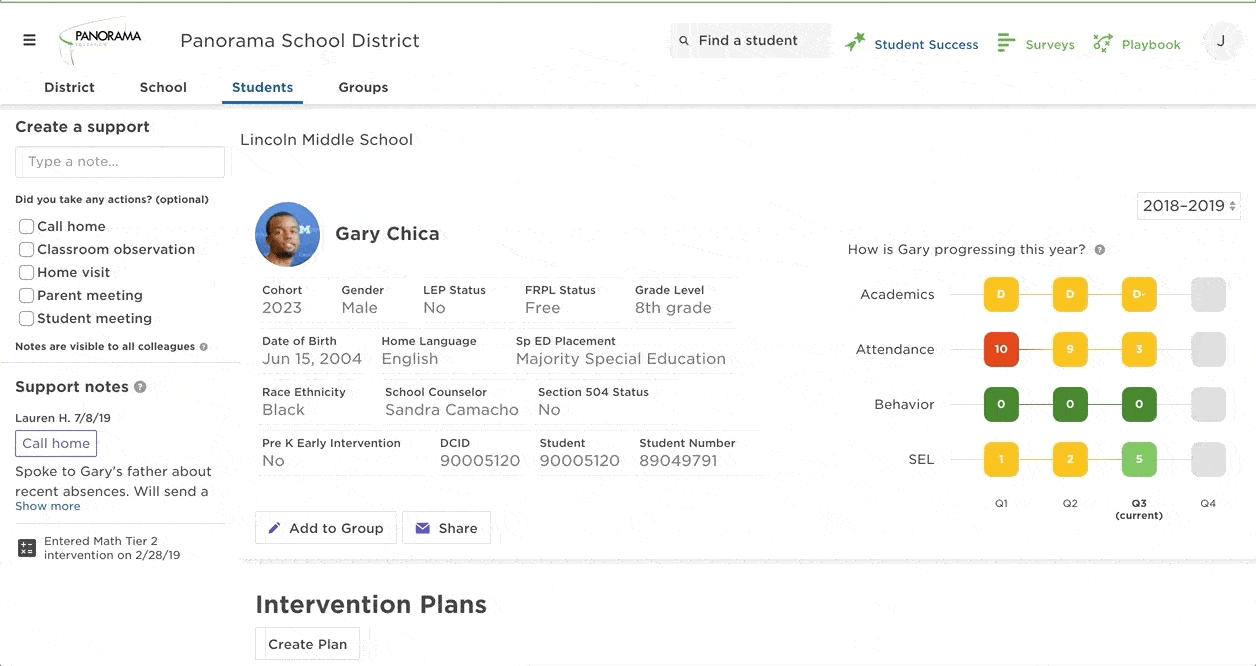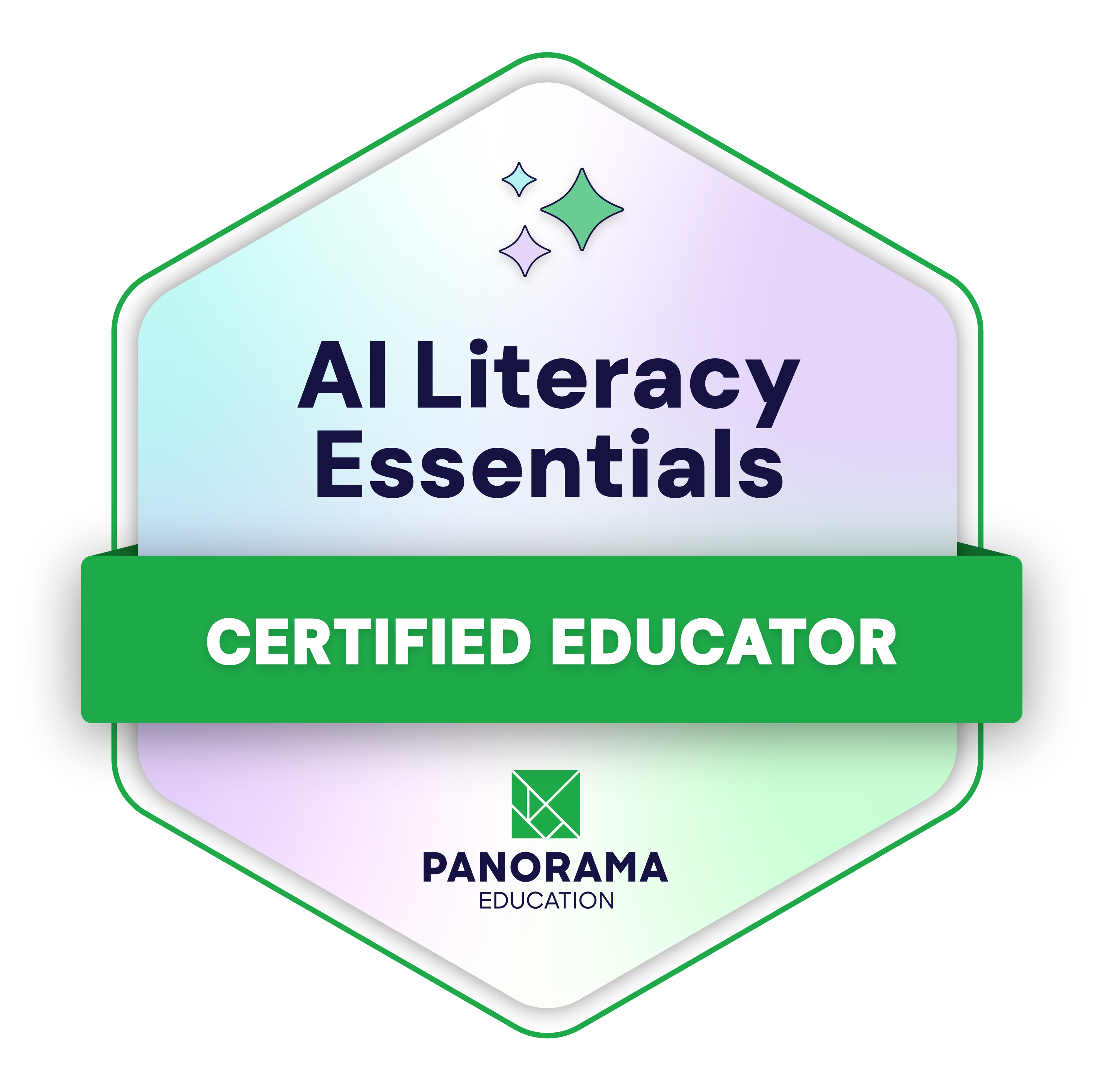The work of MTSS goes far beyond the classroom. You’re creating intervention plans, tracking progress, writing family updates, all while teaching and connecting with your students.
These responsibilities are essential, but they’re also time-consuming. Identifying students in need, documenting supports, and keeping families informed can quickly overwhelm your planning time and pull focus from instruction.
That’s where AI can help. By assisting with routine tasks—like drafting intervention plans, generating family communications, and analyzing student data—AI tools give educators more time to do what they do best: support students.
In this post, explore how AI can make MTSS more manageable and more impactful, helping you deliver timely, personalized support without the paperwork overload.
What Are AI Tools for MTSS?
AI tools for MTSS are designed specifically to support educators by streamlining the most time-intensive parts of the student support process. Built on secure integrations with advanced language models, these tools analyze academic, behavior, and attendance data to recommend tailored interventions, generate ready-to-send family communications, and create support plans aligned with your district’s MTSS framework.
Unlike generic AI platforms, MTSS-specific tools are connected to your existing systems, including student information and assessment platforms. This provides a complete, real-time picture of each student’s needs, which means the recommendations you receive aren’t one-size-fits-all. They’re rooted in research, personalized to your students, and responsive to your district’s priorities.
Most importantly, these tools reflect your district’s voice, values, and protocols. They follow your communication preferences, honor your data privacy commitments, and generate resources that support consistent, high-quality MTSS implementation across your school or district.
Why Are AI Tools Important in K-12 Education?
Supporting students through MTSS takes more than good intentions. It’s a constant balance between managing interventions and making sure every student feels seen, supported, and academically challenged. Even in a single classroom, several students may need Tier 2 or Tier 3 support—a reality that adds layers of coordination, progress tracking, and communication to an already full day.
AI tools reduce the pressure by handling some of the behind-the-scenes work. Instead of spending planning periods chasing down data or writing progress notes from scratch, educators can respond faster to student needs. These tools surface insights that help you act with confidence, and make sure no detail gets overlooked.
In the moments that matter most, AI keeps your focus where it belongs: on your students, not your spreadsheets.
What To Look For In an AI Tool for Your MTSS
Most general-purpose AI tools weren’t built with schools in mind, and it shows. Features that work well in business settings often clash with the complex, student-centered needs of MTSS. If you're exploring AI for education, make sure the tool is designed to support the way your district actually operates.
Here’s what to prioritize in an AI tool for MTSS:
Built-In Privacy Protection
Education data deserves the highest level of care. Your AI should meet FERPA, COPPA, and state privacy requirements without putting the burden on your team. It should never use student data to train external models, and should offer clear, transparent policies for how data is handled.
Seamless Data Integration
The tool should pull from your existing systems—such as your SIS, assessment platforms, attendance, and behavior tracking—to build a complete, current picture of each student.
Research-Driven Recommendations
Look for AI that understands your frameworks, whether you're using RTI, PBIS, or a hybrid model. Intervention suggestions should reflect evidence-based practices and align with your district’s established strategies.
District-Aligned Outputs
From terminology to tone, the AI should mirror your district’s communication style and intervention frameworks. For example, if your schools use specific language around behavior supports or have templates for family letters, your AI should reflect that, not overwrite it.
Transparent Oversight
District leaders need visibility. The tool should include dashboards that show usage trends, access patterns, and engagement levels. This supports both governance and professional development planning.
Appropriate Access Levels
The right information should reach the right people. Teachers, counselors, and administrators each have different needs, and the AI platform you choose should respect those roles when it comes to permissions and data access.
Ready-to-Use Tools
Teachers shouldn’t have to start from a blank page. Look for tools that come with built-in templates for intervention plans, family communications, and progress updates—all designed for real classrooms, not corporate teams.
Professional Implementation Support
Choosing the right AI isn’t enough. Your provider should offer hands-on training, support resources, and implementation guidance that’s grounded in how schools operate.
Context-Aware, Student-Aligned
Every student is different. Your AI should recognize that, adapting recommendations and resources to reflect a student’s unique history, strengths, and challenges, not just generate one-size-fits-all solutions.
5 Practical Ways Panorama Solara Can Support Your MTSS
Panorama Solara is a customizable, district-wide AI platform built for MTSS. Designed to work within your existing systems and aligned to your district’s protocols, Solara helps educators cut through the noise, act on data, and deliver timely, personalized support, without adding to their workload.

It doesn’t replace your professional judgment. It amplifies it—making it easier to do the work you’re already doing with more speed, clarity, and confidence.
Here’s how Solara supports MTSS in real classrooms:
Less Time on Paperwork, More Time With Students
Instead of spending hours writing individualized plans from scratch, you can use Solara to generate intervention ideas based on just a few inputs. The strategies it suggests are grounded in research and aligned with your district’s MTSS framework, so you spend less time formatting and more time focused on instruction.
Truly Personalized Interventions
Solara reviews patterns in each student’s data to recommend supports that meet their unique needs. For example, if two students are struggling with reading, Solara might suggest phonics-based strategies for one and comprehension-focused tools for the other. These recommendations are based on their assessment results, not guesswork.
Stronger, Easier Family Communication
Educators often want to connect more with families, but time may get in the way. Solara makes it easier by drafting personalized letters, meeting agendas, and progress updates that reflect your tone and context. You stay in control of the message, but no longer have to start from a blank page.

Data That Drives Decisions
With Solara, your data becomes easier to act on. It can highlight students at risk of chronic absenteeism, flag early signs of disengagement, or show which interventions are working best for particular needs. These insights help teams make faster, more confident decisions.
More Consistent MTSS Across Classrooms
When every teacher has access to the same base of proven interventions, and the flexibility to adapt them, MTSS becomes more consistent schoolwide. Solara supports that balance. Teachers don’t have to reinvent the MTSS wheel, and students benefit from clearer expectations and continuity of care.
Why Panorama Student Success + Solara Is Your Best Solution for AI-Powered MTSS
MTSS is the foundation for student support, but implementation takes time. Identifying students, coordinating interventions, and tracking progress can feel overwhelming, especially in the crucial first months of school. What if educators could start the year ahead of the curve, with data at their fingertips, support plans ready to go, and a clear path to action?
Panorama Student Success + Solara gives every educator, from classroom teachers to district leaders, the tools to move faster, act smarter, and support students with care. It's the only secure, AI-powered MTSS platform built specifically for K-12.
Solara enhances Student Success by turning rich student data into instant insights, personalized interventions, and high-quality communications aligned with your district's goals and workflows. From chronic absenteeism strategies to academic supports, educators can move from insight to action in seconds.
Additionally, back to school sets the stage for student engagement, and strong engagement is the first step to strong attendance. With Solara's AI-generated attendance plans and Student Success' holistic data insights, educators can connect with students early and often, building momentum that lasts all year.
With Panorama, districts don't have to choose between personalization and scale. Student Success + Solara makes it possible to deliver timely, targeted, and effective support exactly when it matters most.
See how Panorama Solara can transform MTSS for your district.



.jpg)
.png?width=3300&height=1100&name=District%20Leader%20%20Broad%20Promo%20Email%20-%20FINAL%20(1).png)



